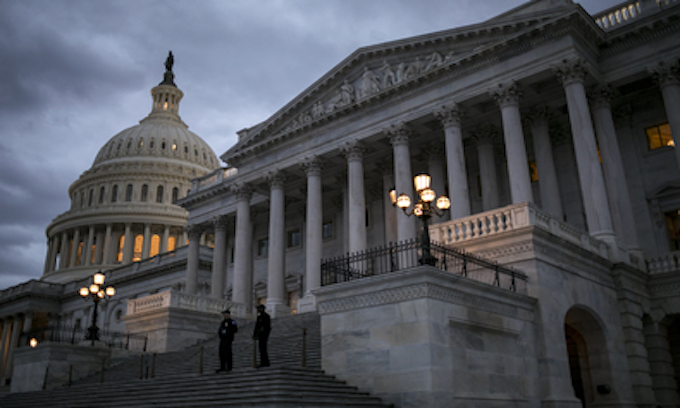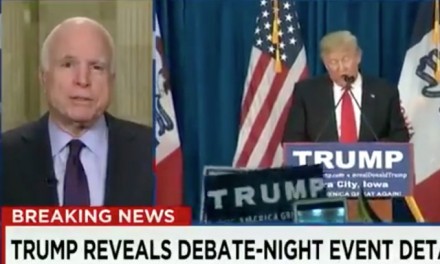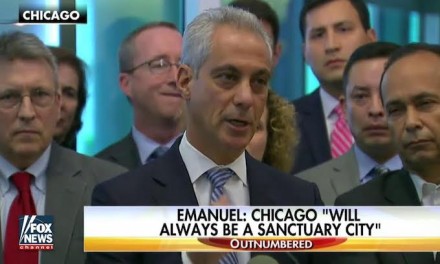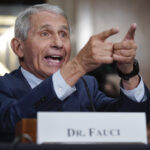When a small library in South Carolina wanted $50,000 for bookshelves, it turned to Uncle Sam — and specifically, Rep. James B. Clyburn, its local congressman.
That proved a wise move. Mr. Clyburn’s largesse seemed based on the idea that if $50,000 was good then $100,000 from federal taxpayers would be even better. He inserted the money as one of thousands of “earmarks” in the 2010 spending bill.
Eight years later, it’s not clear whether the library got any bookshelves or books at all. Indeed, it’s not clear what became of the cash.
Mr. Clyburn, South Carolina Democrat, misdirected the request to Jamestown, California, a town that didn’t have a library at all. That wrinkle supposedly was smoothed out.
Library staffers in Berkeley County, South Carolina, said it appears the money went to a private library. They suggested a place called Jamestown Community Library as the recipient. No one answered multiple phone calls to that book lender’s listed number.
Nearby, according to MapQuest, is Baxter’s Brewhouse Inn, but its proprietor, Joseph Baxter, said that’s news to him.
“Honestly, I don’t even know where Jamestown is,” he said. As for a library of any kind out there, Mr. Baxter said, “that doesn’t ring any bells at all.”
Mr. Clyburn’s office was mum about Jamestown Community Library, responding to neither calls nor emails.
The 2010 spending bill turned out to be the last one Congress had with earmarks. In midterm elections that year, Republicans won control of the House and imposed a moratorium on that kind of pork-barrel spending.
Now, with Republicans again in control of Congress, politicians on both sides of the aisle in the House and Senate, along with the White House, say it’s time to bring back earmarking.
Earmarks are now cast as the WD-40 of government machinery, giving Congress members a tool to fund particular projects within their districts.
President Trump last month said earmarks would help Washington become more productive and less hostile.
“I hear so much about earmarks and how there was a great friendliness when you had earmarks,” Mr. Trump said after a Jan. 9 meeting. “Of course they had other problems, but maybe all of you should start thinking about going back to a form of earmarks.”
Apparently forgotten is the outrage that seemingly frivolous earmarks sparked among taxpayers.
“This is a bad idea,” said Steve Ellis, vice president of Taxpayers for Common Sense. “People think earmarks will be some magic pixie dust that helps get things done, but there’s rarely any value added by them except perhaps to a campaign contributor or to lobbyists.”
Those pushing for a renewal of earmarks say they can do it right this time.
They have promised strict rules that would require lawmakers to publicly announce the projects they are requesting and to be prepared to defend them at hearings. The goal, they said, is to stop the kind of behavior that landed one House Republican in jail in 2006 for selling earmarks to contributors.
“There’s no doubt it was corrupt before, and both sides were guilty of that,” said Melanie Sloan, a former congressional aide and ethics watchdog.
“But it was never as much money as people thought, and one of these days they are going to come back. We see this too often where Congress doesn’t want to do the hard work on what a smart path would be. Instead, we oscillate between all or nothing. I think there’s a thoughtful way this can be handled.”
Ms. Sloan is part of a group of Washington insiders who penned an op-ed in The Washington Post supporting the revival of earmarks under carefully prescribed conditions.
Their five-point plan included a ban on staffer participation in fundraising activities to diminish opportunities for favoritism, and much greater transparency through searchable earmark databases and random Government Accountability Office audits.
“I don’t really buy into the ‘greasing the skids’ metaphor, because it sounds sleazy and because the notion it can’t be reformed is a little exaggerated,” said Jordan LaPier of the Bipartisan Policy Center, which has called for easing back into the practice.
Earmarks rose in dollar amount from $12.5 billion in 1996 to $29 billion in 2006, Mr. LaPier said, and the number skyrocketed from 1,000 to 14,000. But even at their height, they comprised only about 1 percent of total federal spending.
Earmark defenders say much of that went to projects that were undeniably beneficial.
Professors Scott A. Frisch and Sean Q. Kelly wrote “The Politics of Pork,” a book cataloging what they ranked as some of the best earmarks. In one case, they said earmarks had saved troops’ lives in Iraq, tracing mine-resistant ambush protected vehicles back to an earmark in a 2005 spending bill.
The professors said the Pentagon had doubts about the MRAP but was forced to green-light the program because of an earmark. Once defense officials realized their value, the vehicles protecting soldiers from improvised explosive devices began drawing billions of dollars in approved funding.
The same is true of the Predator drone, which the Pentagon didn’t initially want but came to rely on as its principal weapon in the war on terror.
Most of the debate on Capitol Hill today concerns how earmarks get into bills in the first place. History suggests, however, that the way earmark money is spent deserves more scrutiny.
For example, a 2007 inspector general’s report looked at earmarks within the Environmental Protection Agency and concluded that while most were well-managed and contributed to the agency’s mission, some were not.
One EPA earmark that seemed particularly dubious was $365,000 that paid for high school students to take trips between Philadelphia and the U.S. Virgin Islands, including stops at shopping malls and an amusement park. Another earmark paid for a university to study noise levels from parked trains.
Then there was the 2010 spending bill in which the Jamestown library’s request was not the only one to get noticed. Another $200,000 went to study Irish immigrants in New York City, an earmark tied to Anthony Gallagher, 72, who died in his Sunnyside, Queens, apartment in December 2008 only to have his corpse remain undetected for a week.
His death sparked cries of outrage, and Sen. Charles E. Schumer, New York Democrat, heeded those cries by opening the public purse. The earmark money financed the Gallagher Initiative, which The New York Times said two years later was “an ambitious effort to evaluate the whereabouts, lives and needs of the elderly Irish in New York.”
Eight years later, what that money bought is only slightly clearer than the Jamestown library’s. A website dedicated to the initiative hasn’t been updated since 2012. A clunky YouTube video went up in 2014 showing interviews with two immigrants recalling their younger days.
Elaine Walsh, an amiable and earnest urban affairs professor at Hunter College, ran the Gallagher Initiative.
“That’s a very good question,” she said when asked if there were any records or documents to allow scholars or social workers to review.
She said the group produced one video that contained immigrants’ stories and a second that was designed to help caregivers. All told, she said, the initiative interviewed some 350 Irish immigrants in the various city boroughs. Workers at places like Riverdale Senior Services in the Bronx, that still assist some Irish, said they remember the initiative’s work.
Ms. Walsh said the research, which concluded in 2013, had not reached a broad audience, and she regretted that the Gallagher Initiative could not be expanded to other cities and immigrant groups.
On the other hand, Ms. Walsh argued that earmarks give legislators an opportunity to prove they are listening to their constituents. She defended her work and its federal funding, saying valuable niche research can get overlooked in larger budgets and institutions.
“These earmarks make possible initiatives that would not be funded by, say, the National Institutes of Health,” Ms. Walsh said. “And really this isn’t just a New York story; it has national implications. Yet often local governments don’t have the funding to do this kind of research.”
© Copyright (c) 2018 News World Communications, Inc.
—-
This content is published through a licensing agreement with Acquire Media using its NewsEdge technology.



















Recent Comments